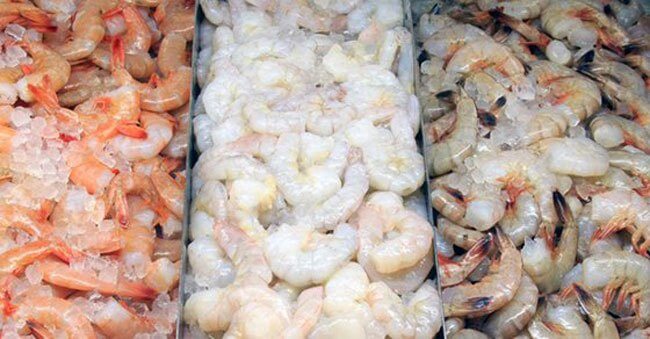Seafood raised on pig feces and crawling with flies is being sold to U.S. consumers. As popular as shrimp is in America, very rarely do people actually pay attention to where it comes from. 100 million pounds of shrimp a year, 8% of the shrimp Americans eat, come from some of the dirtiest conditions imaginable.
Imagine a warehouse full of workers standing on dirty floors covered in trash, with flies crawling all over baskets of un-chilled shrimp in an un-air-conditioned room in September of a tropical climate.
Then those “processed” shrimp are packed into dirty plastic tubs with ice made from tap water that even the local Heath Ministry says should be boiled before consuming to prevent contamination. This is exactly what the shrimp industry looks like in Vietnam.
“Those conditions — ice made from dirty water, animals near the farms, pigs — are unacceptable,” says microbiologist Mansour Samadpour, whose company, IEH Laboratories & Consulting Group, specializes in testing water for shellfish farming.
Then there are the tilapia farms in China where farmers feed fish a steady diet of pig and goose feces.
The manure the Chinese use to feed fish is frequently contaminated with microbes like salmonella,” says Michael Doyle, director of the University of Georgia’s Center for Food Safety, who has studied food – borne diseases in China.
Although the Chinese authorities claim that they ‘strongly discourage’ using feces as food because it contaminates water and makes fish more susceptible to diseases, still, a growing number of Guangdong farmers adopt that practice anyway because of fierce competition. Many farmers have switched to feces as a cheaper alternative to commercial fish food. Either way, these tilapia find their way to US food producers.
Keep in mind, 27% of the seafood Americans eat comes from China. Of that, much of it is rejected due to the conditions the food is in. According to Bloomberg Markets magazine, even though the FDA only inspects 2.7 percent of imported food, FDA inspectors rejected 1,380 loads of seafood from Vietnam and 820 loads of Chinese seafood since 2007. If all of this food is being rejected for filth and salmonella, it raises the question – why are we importing this food anyway?












